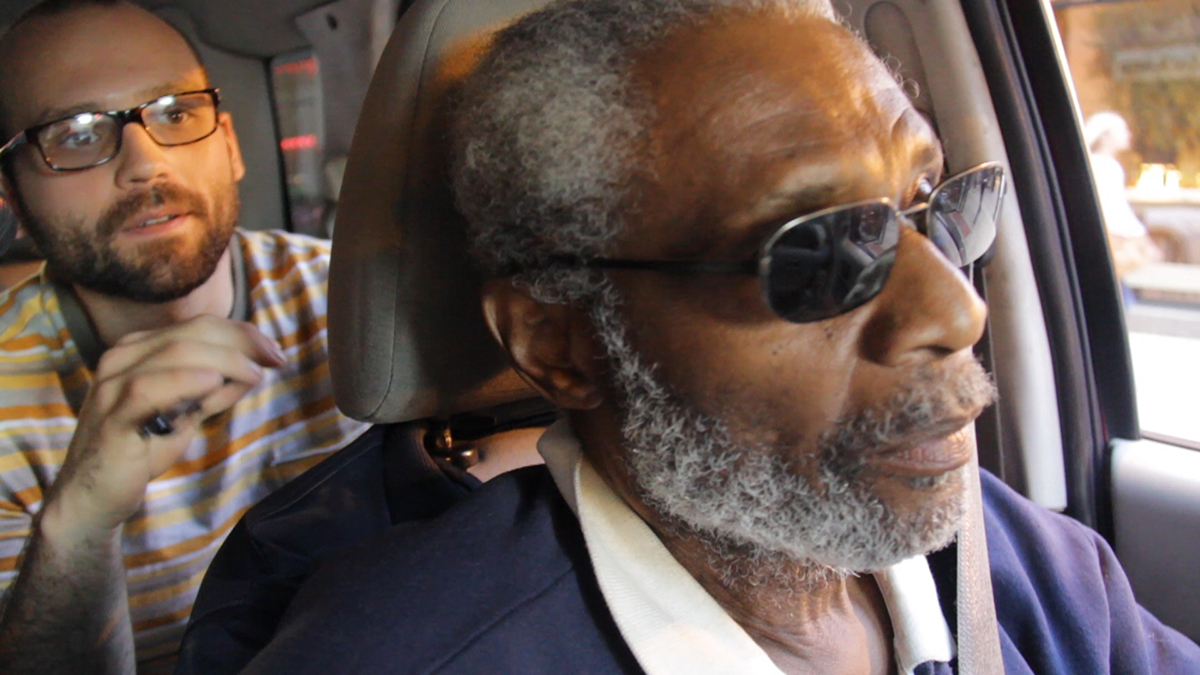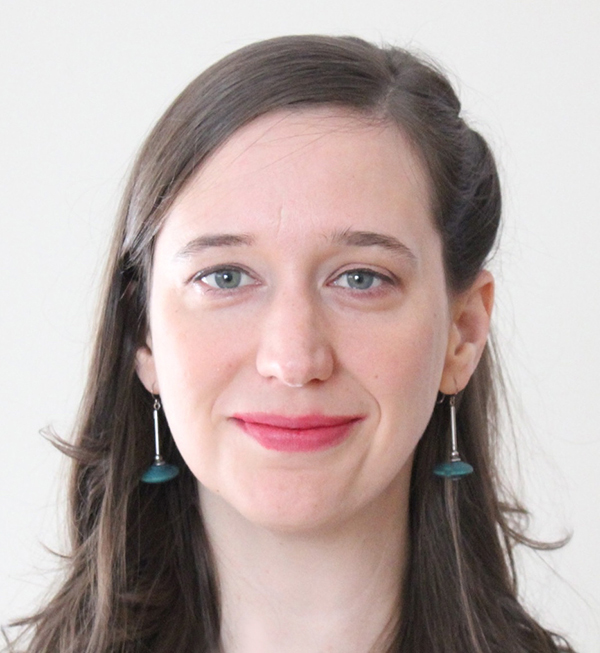
She wasn’t the only one to take note: “I kept hearing conversations around me; people were saying, ‘Is it just me? What is happening here?’” Turns out a freak frost in Florida had wiped out most of the city’s supply of the fruit.
The weather had, in fact, been weird that year. Over dinner she complained to some friends who worked for the Obama administration about the slow pace at which the government was responding to climate change. “What’s the problem?” she remembers asking them. They shrugged, saying climate change was just too big an issue for legislators to understand its direct costs.
Drapkin realized that her friends in government faced the same challenge convincing legislators to act that she did as a journalist in getting readers to care about climate change. In both cases, what was needed was to connect a global issue with individual stories, Florida’s freak frost with the scarcity of tomatoes on your lunch. She wanted a space where citizens with climate- or weather-related questions and stories could share their experiences and engage in conversation with experts about what was really going on.
So Drapkin moved from D.C. to a rural town in western Colorado called Paonia to launch iSeeChange, a news project that involves ordinary people at every stage in the climate reporting process, at public radio station KVNF. In April 2012, she set up a text messaging service and went on air to ask listeners to submit their unusual observations and questions about the local climate.
Texts flooded in. Residents, many of them farmers, had observed environmental changes taking place over decades. The fire chief sent a text about fighting a wildfire in the snow in March, the earliest wildfire on record. Drapkin connected him with a researcher at California’s Sierra Nevada Research Institute, who confirmed that others were seeing fires in snow, and that scientists were predicting that wildfire season could become a year-round phenomenon. One person wrote in with concerns about drought, which the iSeeChange team reported on weeks ahead of others. Another wrote in to report a dandelion blooming almost a month earlier than usual, and iSeeChange ended up reporting on the earliest spring in recorded U.S. history.
ISeeChange has since become a living farmer’s almanac online, expanding to include stories from users all over the country. Drapkin plans to launch an iSeeChange app that will let users exchange information with NASA’s Orbiting Carbon Observatory, which tracks carbon dioxide emissions. With the app she hopes to connect a sweeping scientific study to personal stories of people on the ground to generate new interest in—and even insights into—climate change. “We know when things are right, and when they’re unusual,” Drapkin says. “If you give a space for that to live and verify it with science and journalism, people’s intuition does pay off.”
Drapkin could not have reported on the earliest spring in U.S. history without the residents of Paonia, and the residents of Paonia might not have realized that what they were seeing was historic without Drapkin. ISeeChange points to the power of an emerging form of journalism where professionals work side by side with audiences to find new insights into the world at large. It’s a departure from citizen journalism, which leaves reporting in the hands of well-intentioned amateurs, and user-generated content, which casts journalists as curators over material of widely varying quality and reliability. This approach treats audiences as collaborators in a professionally managed reporting process, deepening audience involvement and even improving the quality of stories reporters produce.
It’s a shift in the way newsrooms think about “the people formerly known as the audience,” as journalism professor Jay Rosen described those who recognized the independent publishing power of the Web starting in the 1990s. While all major news organizations now see the importance of serving audiences who talk back through social media, it’s taken longer to realize the potential of using news consumers early in the reporting process. Audiences are typically only “engaged” once a story has been published, when social media teams push out links on Facebook and Twitter that they hope will go viral, or open up comments sections that often devolve into virtual boxing arenas. These engagement strategies do little to deepen the experience for audiences or reporters.

WBEZ listener Dan Monaghan rode with driver Al Smith for a story he suggested about taxis
Brandel suggests that inviting readers to ask questions yields more journalistic benefits than asking them to leave feedback in a comments section after an article is published. “Questions are a more neutral format where stories can start from,” she says. They can also lead to more original content, pushing journalists to pursue story ideas they wouldn’t have thought of on their own. Giving audiences a seat at the editorial table, as Brandel puts it, also makes them feel more invested and more likely to share stories, increasing traffic and brand awareness for news organizations. She calls it “public-powered journalism.” With public-powered journalism, professionals continue to do the good work they’ve always done—reporting, verifying, and synthesizing complex information—but audiences are regarded not only as recipients but as resources to inspire and inform the work they do.
Brandel’s Curious City started as an experiment—to test whether audiences had good story ideas, and what would happen if journalists gave them some editorial control. “Some people think if you hand over power, your news will end up being all about Kim Kardashian and cat videos,” Brandel says. A search of the Curious City archives turns up no hits on Kim Kardashian, though there was a question submitted about cats: “What’s the deal with Chicago’s feral cats?” (The story didn’t get reported.)
Winning submissions range from “Does the recycling REALLY get recycled?” (Answer: sort of) to “Who cleans up the blood on sidewalks and playgrounds after shootings?” (Answer: it depends) to “Can the new governor undo the approved same-sex marriage bill?” (Answer: probably not). The news team curates questions for voting rounds that benefit the widest possible audience, playing the same crucial role they’ve always played: making sure information is accurate, relevant, and complete. The audience plays a new role—bringing in fresh perspectives and a curiosity that motivates the reporting. Curious City does more than solicit questions from audiences. It actually includes them in reporting trips, too.
One listener, Dan Monaghan, wanted to know how often taxis are pulled over and for what. He felt that many drivers were reckless, and assumed they must get a lot of speeding tickets. His question got selected thanks to his initiative rallying his friends to help with voting, and a few months later he joined WBEZ’s Odette Yousef in the field.
The experience completely changed his perspective on taxi drivers. After spending hours interviewing several of them, he realized that the traffic system works against drivers. It’s not speeding tickets, but parking tickets they face most often. They can also get tickets for dropping people off in high-traffic zones, where police sometimes wait around to issue tickets. Many of those tickets aren’t even issued in person, but by mail several weeks after the violation occurred. “That really upset me,” Monaghan says. He walked away from the experience with a new respect for the challenges cab drivers face, and a new understanding of how the stories he heard every day on the radio were created. “It was awesome to experience firsthand,” he says.
In March 2014, Christie Pettitt-Schieber asked whether the governor of Illinois could undo recent legislation making same-sex marriage legal in the state. Her curiosity was personal: She wanted to marry her girlfriend, and the state was electing a new governor in November. Reporter Alex Keefe brought her into the recording studio for several hours as they called civics experts and eight candidates to find the answer. They discovered that none of the candidates was willing to challenge what is fundamentally a legislative decision. So Pettitt-Schieber and her girlfriend could continue their search for the perfect engagement ring. Since the story is built around a real person with a specific motivation, it’s more relatable. “You get to hear the discovery process unfold,” says Keefe. “Audience members ask questions you don’t think to because you think you know the answer.”
On another Curious City reporting trip Keefe brought a frustrated Chicagoan named Andrea Lee in to interview an alderman named Walter Burnett. Lee wanted to know what an alderman’s job responsibilities are. Her question was inspired by her experience calling about several issues (recycling bins, basement flooding) that her alderman said he couldn’t help with.
As a political reporter in Chicago, Keefe was careful with and respectful of his sources, recognizing that he relies on them to do his job and may want to talk to them again for a future story. Lee, as an average Chicago citizen, had no such concerns. She went into the interview with no filter, telling Burnett exactly what she thought about his job and what she thought he could do better. “It was awkward, but fantastic,” says Keefe. Keefe, who now works at Vermont Public Radio, says that the Curious City stories he produced were the most fun he’s had as a reporter, but that it could be scary because as a journalist you relinquish a bit of control.

The Guardian asked online for help recording all U.S. police killings, not just high-profile deaths like Freddie Gray, memorialized in Baltimore
“We have journalists who specialize in mining the potential leads that come in from audiences,” says Amanda Zamora, senior engagement editor at ProPublica. The organization, which launched in 2008, has a long history of involving audiences in its reporting. The leads often come from callouts on the website, which invite users to submit experiences that inform its investigations into everything from the use of Agent Orange in Vietnam to segregation in schools to discrimination against pregnant workers. “We don’t necessarily know which question will gain traction,” Zamora says.
Due to a reporting error, an earlier version of this piece incorrectly characterized how ProPublica uses calloutsCallouts, posted as reporters work on an investigation, sometimes yield valuable information. Some investigations take off, sparking the formation of a community that follows the story as it evolves. “Patient Safety,” which explores medical malpractice in the U.S. healthcare system, has its own Facebook group with over 3,000 members and a database of 900 sources, people who have their own stories to tell and a personal interest in the reporting. “We have niche targeted audiences that pop up around our investigations,” Zamora says. Advertisers covet that type of engaged audience, hinting at the business potential of the public-powered model.
A lot of newsrooms pay lip service to “audience engagement,” and if it’s an afterthought or feels like an obligation, the effort to engage will most likely fail. Journalists that instead recognize the audience as a resource, and engagement as a way to tap that resource, can use it to pursue otherwise impossible-to-report stories. The process begins in the same way lots of journalism begins: with a question.
Reporters at The Guardian wondered how many police killings occur in the U.S. every year. Most deaths never make national news like the deaths of Michael Brown and Freddie Gray. The Guardian searched in vain for a reliable database that records the number and nature of deaths that occur at the hands of U.S. police. The only official government data comes from a voluntary reporting program organized by the FBI. Only 224 of 18,000 law enforcement agencies made reports in 2014. Evidence from academics and journalists who independently track police shootings suggest there’s a major underrepresentation of the number of “justifiable homicides” committed by police officers.
So The Guardian launched The Counted, which tracks the number of killings with the help of a community it has built that connects reporters with people from regions of the U.S. to which they wouldn’t otherwise have access. Almost every day, a counter on the website ticks up a notch or two, grimly tallying the number of people who have died. Below the counter is a chronological list of the names (when known), ages, and faces (when pictures are available) of the deceased. The number of deaths tracked so far in 2015 is on pace to top 1,100 by the end of the year.
Each death is visualized on a calendar and is clickable to reveal further details, such as whether the victim was armed, which police department was involved in the death, and how it occurred. People submit from all over the country, according to Mary Hamilton, U.S. audience director for The Guardian. She says there are people who submit multiple incidents, helping journalists with the legwork of scouring thousands of local news sources for death reports that might not have made national headlines. “Readers are one of the largest and most comprehensive resources we have,” says Hamilton.
In addition to submitting tips through the website, readers can join a Facebook group to get updates and share information. The group has almost 16,000 members. Reaching potential sources through social media has been important for the project because many people who might have knowledge of an incident in the U.S. may have never heard of The Guardian, which is based in the U.K. “We wanted to reach people who care about police killings, not people who care about The Guardian,” says Hamilton. As a result, The Counted is also building new audiences for the paper, another example of a fringe benefit of this approach.
Journalists already use many of the tools of public-powered journalism—Twitter, Facebook, e-mail, and Web surveys. “It doesn’t take new resources, but a different deployment of resources,” says Brandel. When she started Curious City, Brandel cobbled together a variety of tools such as Google Forms and Polldaddy to realize her vision. But she wanted something better. As a result of being accepted into the San Francisco-based Matter start-up incubator, she and her team were able to build tools designed for reporting. The result is Hearken, a Web-based platform built with the needs of newsrooms in mind. She hopes it will make it easier for media organizations around the country to connect with audiences in ways that enhance their work, and maybe even the bottom line.
Brandel has tested Hearken with a dozen public radio and news outlets with a community focus. “We want it to be scalable, and make sure it works,” she says. A company called Chalkbeat is using it for education reporting, and local outlets like San Francisco’s KQED and Seattle’s KUOW have had success deepening engagement with Hearken-powered stories. Hearken stories at San Francisco’s KQED got 11 times the pageviews of others, and average time on those pages was nearly five times the industry average, Brandel told Fast Company. Fifty-six percent of e-mails collected by WBEZ Chicago as a result of Curious City were new, meaning Hearken can create new doorways through which users can connect with an organization.
Hearken’s embeddable modules are designed to engage audiences at a specific point in the reporting process, from pitch, to assignment, reporting, publishing, and feedback. The Curiosity and Voting Modules mimic the user question and voting forms used for Curious City. An Interactive Reporter Notebook tool is set to launch in the spring. Brandel hopes that media companies will embrace this form of engagement so that it becomes one of many ways organizations create stories.
Newsrooms recognize that audience engagement is key to business survival, and public-powered journalism provides a model for engagement that is good for business and for journalism. Involving audiences in the reporting process can help generate leads, test a story’s traffic potential, enhance the reporting process, and lead to growth. But the greatest benefit has nothing to do with money. “Our readers make our journalism better,” says Hamilton.


